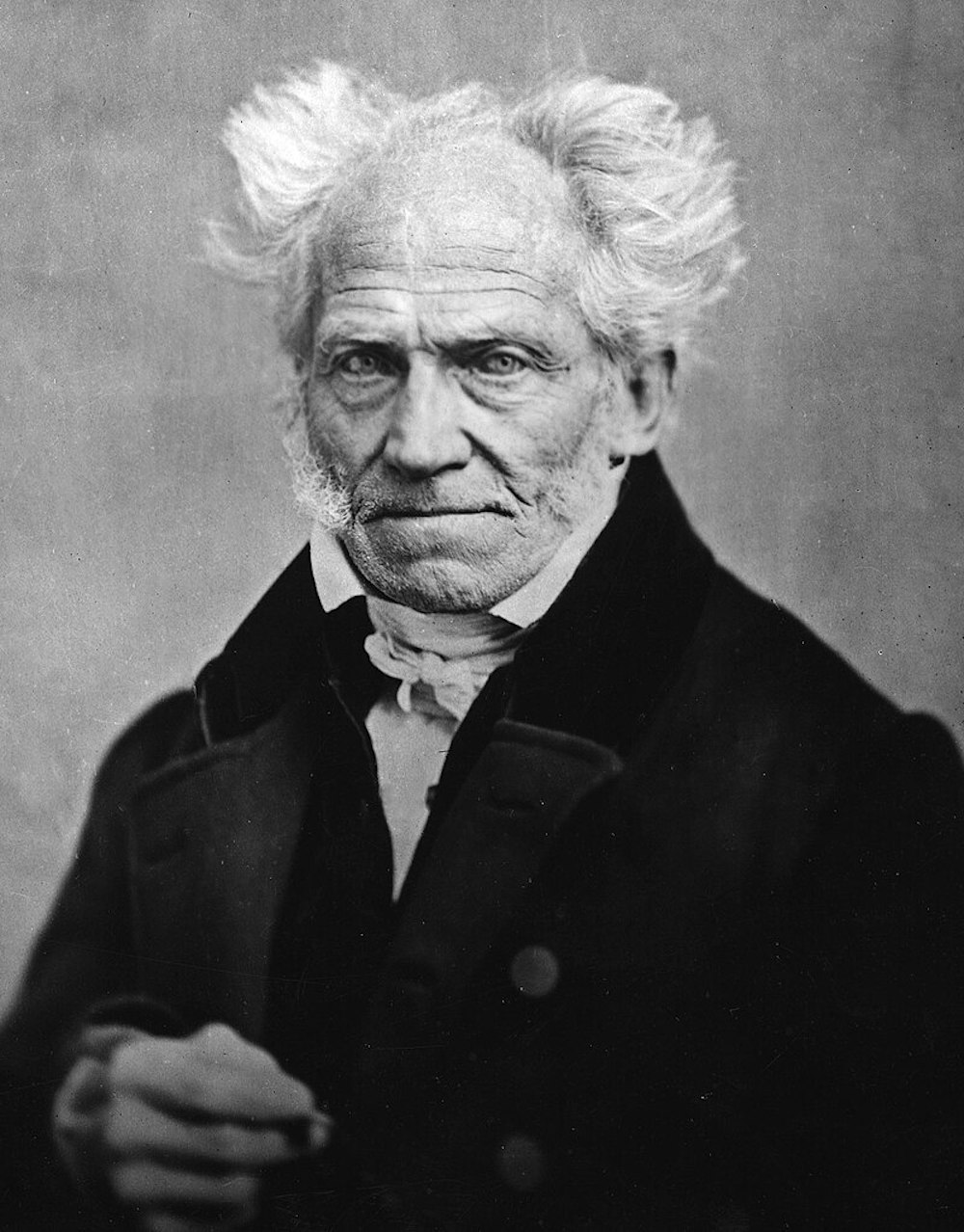The Buddhism of Schopenhauer
The famed German philosopher did not become acquainted with Eastern thought until after writing his magnum opus. Yet in Buddhism, he found reflection—and validation—of his own genius. The post The Buddhism of Schopenhauer appeared first on Tricycle: The Buddhist...

In a particularly harrowing passage from his 1819 discourse The World as Will and Representation, German philosopher Arthur Schopenhauer cites an account from one of botanist and geologist Franz Wilhelm Junghuhn’s expeditions to the Indonesian island of Java.
“Junghuhn,” Schopenhauer writes, “saw an immense field entirely covered with skeletons, and took it to be a battlefield. However, they were nothing but skeletons of large turtles, five feet long, three feet broad, and of equal height. These turtles come this way from the sea, in order to lay their eggs, and are then seized by wild dogs (Canis rutilans); with their united strength, these dogs lay them on their backs, tear open their lower armor, the small scales of the belly, and devour them alive. But then a tiger often pounces on the dogs. Now all this misery is repeated thousands and thousands of times, year in, year out. For this then, are these turtles born. For what offense must they suffer this agony? What is the point of the whole scene of horror?”
To readers familiar with Buddhist scriptures, this passage inevitably echoes the story of Siddhartha Gautama, whose shocking encounter with the overabundance of death and suffering outside his princely palace propelled him on his path to Buddhahood. This is not a coincidence, as Schopenhauer, who lived from 1788 to 1860, is widely recognized as one of the first Western philosophers to develop a serious interest in Eastern thought. Financed by an inheritance from his merchant father, he spent most of his adult life secluded at home, at his own princely palace of sorts, reading and rereading the Vedas and Upanishads, accompanied by a succession of white poodles all named Atman, after the Hindu and Buddhist concept of the true or eternal Self or witness-consciousness.
Many wrongly assume that Schopenhauer was aware of these ancient texts before writing World as Will. In truth, the philosopher completed his magnum opus well before ever diving into them. They did not serve as an inspiration so much as they seemed to confirm what he had already discovered through independent study. Ignored by the academic community of his time, Schopenhauer—who, like Franz Kafka or Vincent van Gogh, did not become a household name until after his death—found quiet comfort in the fact that his work seemed somehow connected to one of the oldest and greatest philosophical traditions on the planet.
In an article titled “Buddhism and Nineteenth-Century German Philosophy,” the German theologian Heinrich Dumoulin notes that, while scholars from Southeast Asian countries had readily consumed Western philosophy since the 1700s, “Asian ideas and cultural values were slower to gain entry into Europe.” Asian philosophy traveled westward not through professors but Jesuit missionaries who saw traces of their own Christian worldview reflected in Buddhism and Confucianism.
Germany’s first introduction to Indian thought came from Polish philosopher Johann Gottfried Herder (1744–1803), who—after translating the Bhagavad Gita from Sanskrit into German—went on to write that “in India, the human mind acquired its first form of wisdom and virtue, with a depth, strength, and sublimity which … has no equal in our cold, European, philosophical world.” Further steps were taken by August Wilhelm Schlegel (1767–1845), who occupied the first chair in Sanskrit at the University of Bonn, and his younger brother Friedrich (1772–1829), author of an influential essay titled “On the Language and Wisdom of the Indians.”
Aside from a small but steadily growing class of Buddhist scholars in the West, Buddhism also caught the attention of a handful of leading German philosophers who, though they did not understand its history to the extent of their specialized peers, found its teachings to be relevant to their own writing.
Despite never leaving his hometown of Konigsberg, Immanuel Kant was fascinated with foreign cultures. For over forty years he taught a course on “Physical Geography,” one of the first in the country, compiling material from travel literature. He talked about Buddhism in lectures on Tibet, India, China, and Japan, and, according to Dumoulin, “was sympathetic to the Buddhist belief in [the] transmigration of souls.” Kant, whose concept of the categorical imperative outlines a series of ethical laws all people should follow regardless of their circumstances, was also impressed by what he perceived to be Buddhism’s distinct moral character, with karma promising to punish evil and reward good when earthly institutions failed.
Kant’s contemporary Georg W. F. Hegel, Schopenhauer’s nemesis, also devoted space to Buddhism, albeit in a different context. Arguing that “world history moves from East to West,” the great dialectician concerned himself with the Far East only insofar as—in Dumoulin’s words—he “sought to integrate all the [world’s] religions into his own grandiose metaphysical system.”
Schopenhauer differed from Hegel in that he viewed Eastern thought as different from and arguably superior to its Western counterpart. Letters reveal that he first encountered Eastern spiritual wisdom in 1813, when his friend Friedrich Maier, an Indologist and author of a book titled Brahma, or the Religion of the Hindus, gifted him a Latin translation of the Upanishads.
Letters also reveal that Schopenhauer had already made significant progress on World as Will before he was able to sit down with this translation. “The agreement with my own teachings is especially wonderful,” he later told an acquaintance, “since I wrote the first volume [from] 1814 [to] 1818 and did not know anything about all that, not having been able to acquire all that knowledge.” Schopenhauer’s pursuit of the Upanishads really took off after he resigned from his post at the University of Berlin and devoted himself entirely to independent study.
The deeper he dove into Eastern thought, the more similarities he discovered between it and his own. This was especially true of Buddhist scriptures, which, like World as Will, proposed that what we commonly regard as “reality” is in fact an illusion, a pale imitation of a higher, invisible truth. Juxtaposed against this false reality—a duality Schopenhauer had originally inherited from Kant, who was in turn indebted to Plato and his allegory of the cave—was what Kant termed the “thing-in-itself” (Ding an sich) and what Schopenhauer came to refer to as the Will: an essential energy that animates and unites all living entities: the “this” in the “For this then, are these turtles born.”
In a line of reasoning that closely follows the Buddha’s four noble truths, Schopenhauer argued that the Will—expressed in animals as the need to exist, grow, and reproduce, and in humans as desire in all its various, complicated forms—was the cause of all suffering, since desire can never be satiated. Because the Will is the essential energy of the universe, Schopenhauer also argued that suffering was an inseparable aspect of existence, escapable only through the renunciation of desire and, by extension, existence itself.
He supposed that the rejection of the Will—through the consumption of art or an ascetic lifestyle—would lead to a state of bliss not unlike what we conceive of when we hear the word nirvana:
“Then nothing can trouble a man more, nothing can move him, for he has cut all the thousand cords of will which hold us bound to the world and, as desire, fear, envy, anger, drag us hither and thither in constant pain, He now looks back smiling and at rest on the delusions of this world which once were able to move and agonize his spirit also, but which now stand before him as utterly indifferent to him as the chessman when the game is ended, or as in the morning the cast-off masquerading dress which worried and disquieted us in the night in carnival. Life and its forms now pass before him as a fleeting illusion, as a light morning dream before half waking eyes, the real world already shining through it so that it can no longer deceive, and like this morning dream they finally vanish altogether without any violent transition.”
In a preface added to a later edition of World as Will, a more educated Schopenhauer addressed the ancient sagacious wisdom he now perceived in his 1819 book:
“If he [the reader] is a partaker of the benefit conferred by the Vedas, the access to which, opened to us through the Upanishads, is in my eyes the greatest advantage which this still young century enjoys over previous ones, because I believe that the influence of the Sanskrit literature will penetrate not less deeply than did the revival of Greek literature in the fifteenth century: if, I say, the reader has also already received and assimilated the sacred… Indian wisdom, then is he best of all prepared to hear what I have to say to him…”
Like Siddhartha Gautama, Schopenhauer’s philosophy about suffering, desire, and renunciation was informed by an at times tragic, at other times unsatisfying life—a life the Indian scholar of Bengali and English literature Rabindra Kumar Das Gupta once summed up as a string of “failures and disappointments.” Born in Danzig, Schopenhauer was just 5 years old when the Polish city lost its status as a Polish exclave in the Polish–Lithuanian Commonwealth and was made a part of Prussia. At 17, his father was found dead in a canal. Those close to the family speculated that Heinrich, a shrewd but struggling businessman, must have slipped, but Schopenhauer was convinced that his father—his melancholic tendencies worsened by financial trouble—had actually committed suicide.
Although the future philosopher had never been close to his father, he actively despised his mother. Johanna Schopenhauer, a successful writer and professional bohemian who kept an entourage of artists and intellectuals, including Johann Wolfgang von Goethe, felt the exact same way about her son, calling him “unbearable and burdensome” and “very hard to live with.” The lukewarm reception of World as Will, which Schopenhauer had secretly hoped would place him at the pinnacle of German academia, only worsened their relationship. Their quarrels became more and more frequent until, one day, Johanna pushed Arthur down the stairs, prompting the latter to declare—as Dumoulin put it—that “posterity would remember her only through his reputation.”
Schopenhauer argued that suffering was an inseparable aspect of existence, escapable only through the renunciation of desire and, by extension, existence itself
This declaration proved prophetic only in retrospect. With unsold copies of his manuscript collecting dust, Schopenhauer acknowledged and even embraced the then-likely possibility of his name fading into obscurity. As his personal life crumbled, so did his career. In less than a year after accepting his professorship at the University of Berlin, Schopenhauer resigned from the institution when his class—scheduled at the same time as Hegel’s—failed to attract a sufficient number of students.
In light of such biographical details, one cannot help but wonder whether Schopenhauer’s pessimism was logical or pathological in nature, whether the philosopher arrived at his bleak worldview through sincere, unbiased introspection, or whether he was pushed in this direction by the frustration of his many unfulfilled desires.
Friedrich Nietzsche, an early admirer of Schopenhauer, supported the first of these two hypotheses, arguing the philosopher’s isolation from society offered the same clarity and insight that he himself enjoyed in chronic illness. He described Schopenhauer as “absolutely alone, with not a single friend,” arguing that “between one and none there lies an infinity.”
Accepting his own mortality, Schopenhauer became willing to acknowledge uncomfortable yet obvious truths that others—shielded by a lover’s embrace or intoxicated by alcohol—ignored. Proof of the world’s inherent cruelty did not have to be uncovered or elucidated; it was evident in the most basic functions of nature, in which, Schopenhauer once wrote, “the agony of the devoured animal is always far greater than the pleasure of the devourer.”
Just as his pessimism stemmed from rational observation rather than emotional trauma, so too was it motivated by compassion rather than disdain. As he wrote in World as Will:
“If you led the most unrepentant optimist through the hospitals, military wards, and surgical theatres, through the prisons [and] torture chambers … through battlefields and places of judgment, and then open for him all the dark dwellings of misery that hide from cold curiosity, then he too would surely come to see the nature of this best of all possible worlds.”
Interpreting Schopenhauer as a 19th-century incel who blames his unhappiness on an indifferent universe not only misses the point of World as Will, but also of the Eastern thinkers he came to identify himself with. Dumoulin notes that, as a result of systemic misreading, both “Schopenhauerism” and Buddhism are viewed in the West as philosophies of death, of rejecting a painful, meaningless existence in favor of painless but equally meaningless nonexistence. In truth, Schopenhauer’s philosophy was fueled by a deep love and care for the world that had supposedly mistreated him, just as his conception of overcoming the Will—much like the nirvana that it evokes—was neither negative nor nihilistic. As with Sisyphus, or the Buddha, we must imagine Schopenhauer happy.

 JaneWalter
JaneWalter 































